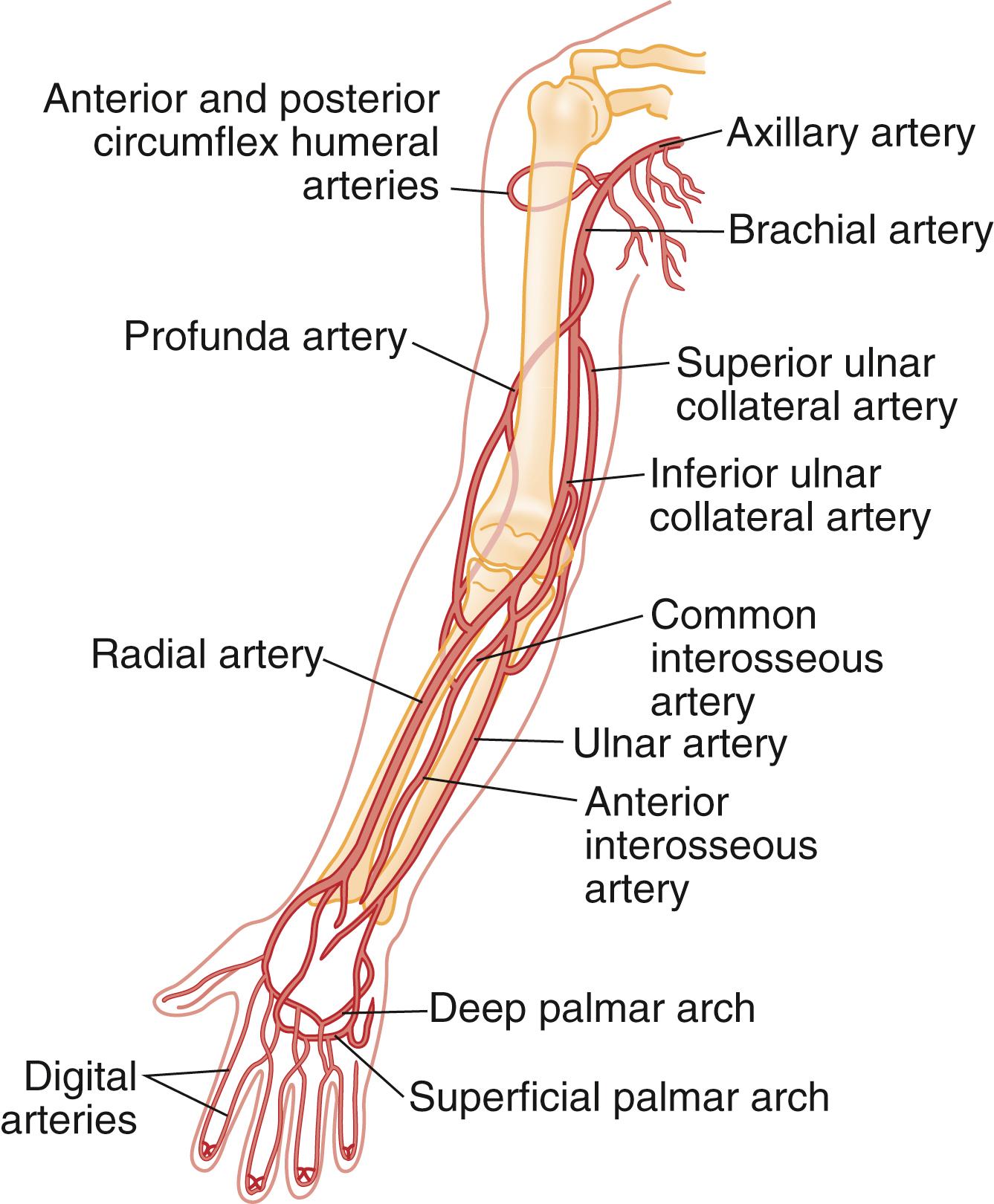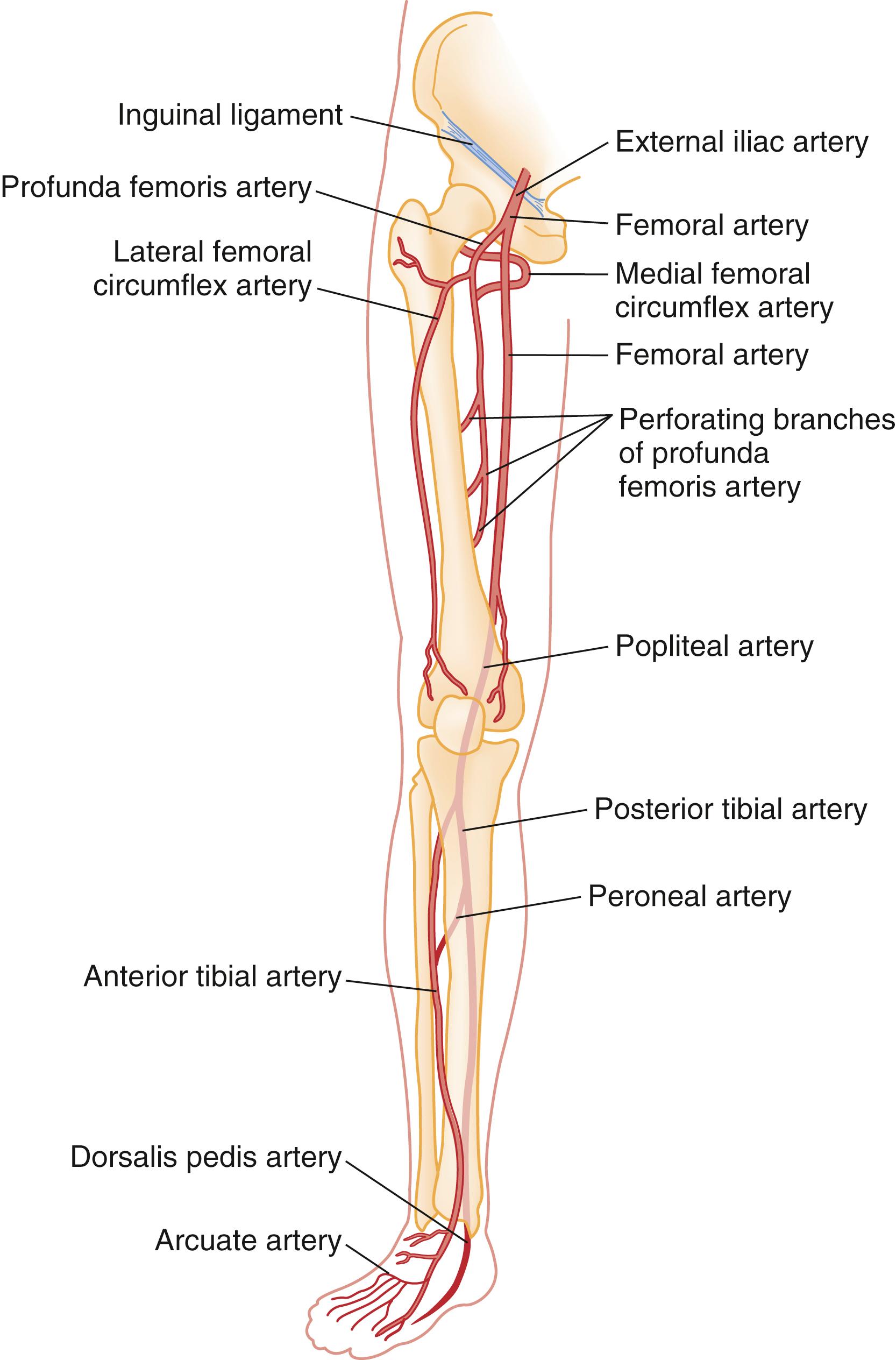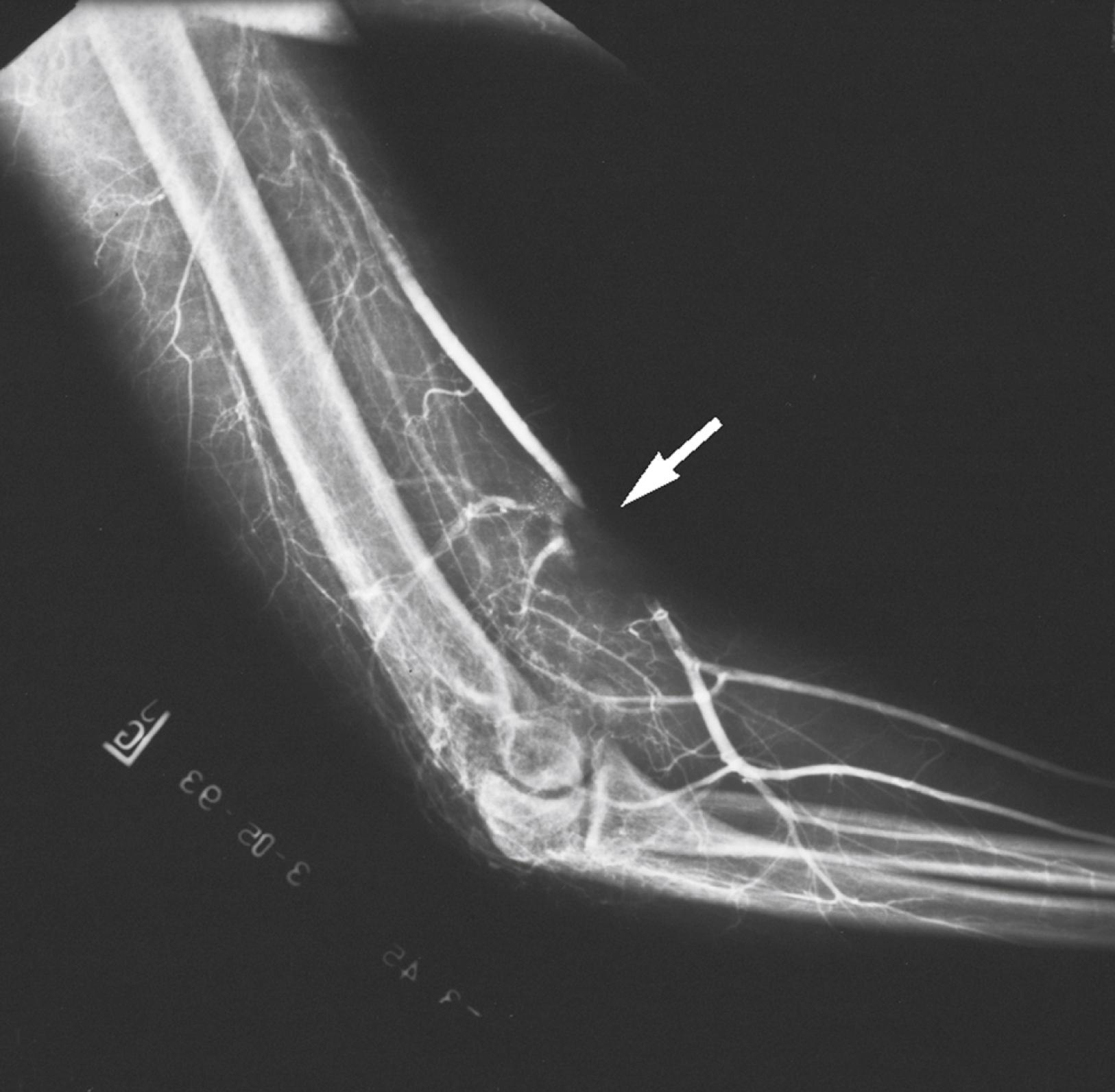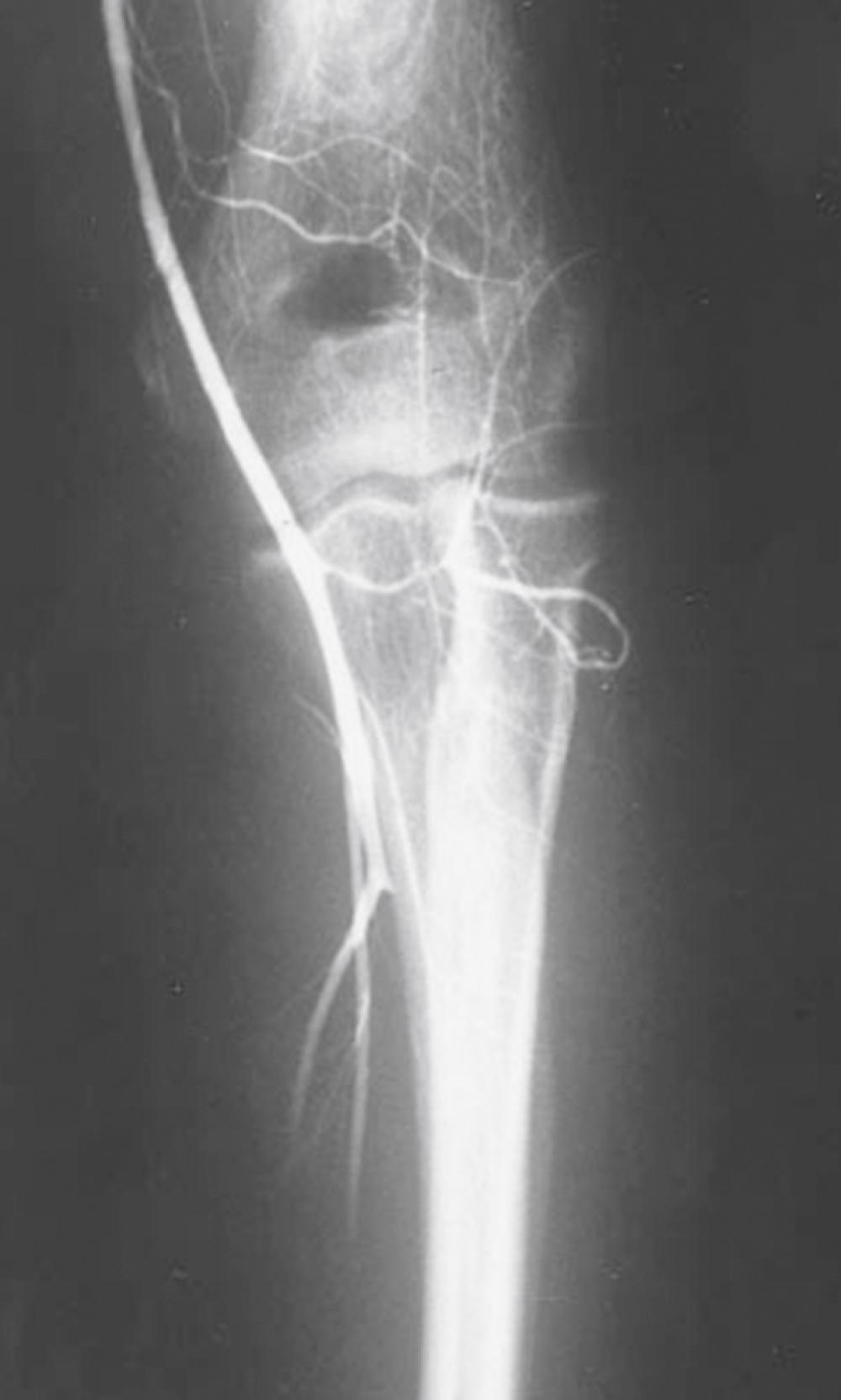Physical Address
304 North Cardinal St.
Dorchester Center, MA 02124
The overall condition of the patient with an acute peripheral vascular injury determines the extent of emergency department (ED) evaluation and stabilization. Critically injured patients may require immediate surgery, which should not be delayed for confirmatory studies of obvious vascular injury.
Arterial injury may be readily apparent or clinically occult. In patients with high-energy blunt mechanisms, computed tomography angiography (CTA) should be the initial diagnostic modality of choice. In patients with lower-energy mechanisms, serial physical examinations may be performed instead.
Symptoms of arterial injury may be delayed by hours to months after the initial injury. Late onset of symptoms suggests delayed thrombosis, pseudoaneurysm or arteriovenous fistula (AVF) formation, compartment syndrome, or intermittent claudication, resulting from stenosis or reliance on small-caliber collateral vessels for arterial perfusion.
Compartment syndrome frequently develops in extremities with arterial injury, particularly injuries of the lower leg, and fasciotomy is often required.
Many vascular injuries are amenable to endovascular treatment with self-expanding stents. This results in fewer complications, lower cost, and earlier discharge from the hospital.
Injury to the major peripheral arteries or veins may not always be life threatening, but it invariably poses a threat to the viability of the affected extremity. Historically, due to the rapidity of exsanguination, injury to major vessels was often fatal in the field, and most patients who survived to hospital arrival had relatively minor vascular injuries. However, with the advent of modern emergency medical service (EMS) systems with advanced extrication methods and rapid transport, more patients with major vascular injuries are reaching the emergency department (ED) alive. In addition, the incidence of both penetrating injuries from interpersonal violence and blunt injuries from motor vehicle–related trauma has increased dramatically over the past 50 years. Consequently, emergency clinicians are frequently confronted with critically ill patients harboring overt (or occult) peripheral vascular injuries.
Management of these vascular injuries has also evolved, with advances in diagnostic methods and surgical techniques. Treatment of vascular injuries before and during World War II resulted in limb amputation rates of 50% to 75%. Advances during the Korean and Vietnam wars reduced amputation rates to 5% to 15%, which approach the current rates of amputation for civilian injuries.
Tremendous progress has also been achieved in diagnostic and therapeutic techniques for dealing with peripheral vascular injuries, and several noninvasive diagnostic modalities have emerged as accurate alternatives to surgical exploration and angiography. These techniques are readily used in the ED setting, and the goal of timely detection and repair of serious vascular injuries is achievable in the majority of cases.
Peripheral vascular injuries are divided almost equally between blunt and penetrating mechanisms. Major venous injuries are present in up to 50% of gunshot wound cases, and more than 80% of these have associated arterial injuries. In addition, due to the increased use of percutaneous endovascular diagnostic and therapeutic procedures, the incidence of iatrogenic vascular injuries has increased and accounts for up to one-third of all cases in some series.
The major vessels and their relevant anatomy are described in the following sections ( Figs. 40.1 and 40.2 ).


The right subclavian artery arises from the brachiocephalic artery, and the left arises from the arch of the aorta. From their origin, they course posterior and inferior to the clavicles to the outer margins of the first ribs, where they become the axillary artery and vein. The left subclavian artery rises higher than the right and extends into the root of the neck.
The axillary artery courses from the lateral border of the first rib to the inferior border of the teres major muscle, where it becomes the brachial artery. The axillary vein runs medial to the artery. Due to the extensive anastomotic arterial connections around the shoulder joint, up to half of patients with axillary artery injuries will have palpable pulses as a result of collateral circulation. Because of the close proximity of the brachial plexus and the axillary vessels, significant denervation of the upper extremity can occur.
The brachial artery begins at the lower border of the teres major muscle and divides into the radial and ulnar arteries at the level of the proximal aspect of the radial head. The median and ulnar nerves and the basilic vein are in close proximity to the brachial artery. The profunda brachii artery is a major branch that arises slightly after the origin of the brachial artery and often contributes adequate collateral flow if the brachial artery is injured distal to this branch point.
The radial artery originates in the cubital fossa and runs superficially to the distal end of the radius, where it ultimately joins the deep branch of the ulnar artery to form the deep palmar arch of the hand. The ulnar artery begins in the cubital fossa and runs with the ulnar nerve anterior to the flexor retinaculum, at which point it joins the radial artery to form the superficial palmar arch of the hand.
The external iliac vessels become the common femoral vessels at the inguinal ligament. After bifurcation of the profunda femoris artery in the femoral triangle, the femoral artery continues as the superficial femoral artery almost vertically to the adductor tubercle of the femur and enters the popliteal fossa as the popliteal artery. Extensive proximal collaterals are present around the hip joint, including the gluteal, obturator, and pudendal branches of the iliac artery.
The popliteal artery gives off the genicular branches in the popliteal fossa and then divides into the anterior and posterior tibial arteries at the lower border of the popliteus muscle. The peroneal artery arises from the posterior tibial artery slightly after its origin. The anterior and posterior tibial arteries and the peroneal artery form the trifurcation of the popliteal artery, and each run with a corresponding vein and nerve in different compartments of the leg.
The popliteal artery divides into three branches—the anterior and posterior tibial and the peroneal arteries—at the inferior margin of the popliteal fossa. Injuries below the trifurcation at the knee may require repair if classic “hard” findings of arterial injury are apparent in the foot or if two of the three arteries are occluded. The most common blunt trauma cause of popliteal artery injury is a posterior knee dislocation in which bony elements directly lacerate or cause thrombosis of the artery. Anterior knee dislocations may cause excessive stretch on the popliteal vessels resulting in arterial thrombosis, but this injury is relatively rare. Up to one-third of knee dislocations result in popliteal artery injury. Twenty-five percent of cases have an associated injury to the peroneal and posterior tibial nerves.
Blunt and penetrating types of trauma result in similar spectra of vascular injuries, although their mechanisms of injury differ. Although blunt vascular injuries are less common than penetrating injuries, they are often more severe and more commonly result in amputation because of associated injuries to nerves, bone, tendons, and soft tissue. Certain mechanisms of injury, such as animal bites that crush and lacerate vessels, can involve both penetrating and blunt mechanisms (See Chapter 52 ).
Gunshot wounds can cause direct arterial lacerations or transections, in addition to concussive injuries distal to the track of the bullet. These latter injuries tend to tear into the intima of an artery, with subsequent thromboses that may not become apparent for hours to months after the injury. Bullets may ricochet off bone, making predicting trajectories less accurate than with stab wounds.
Stab wounds cause vascular injuries by completely or partially transecting vessels. Partial laceration of an artery may produce few symptoms of arterial insufficiency on initial evaluation but result in delayed complications. The vascular structures at risk can be predicted more reliably with stab wounds than with gunshot wounds by taking into consideration the anatomic location, causative implement, depth, and direction of the wound.
Shotgun wounds are less common than gunshot or stab wounds, but they can cause injuries varying from minor soft tissue wounds to massive destruction of soft tissue and bone, depending primarily on the range from which the shotgun was fired. The presence of multiple missiles ranging from 9 or 10 (buckshot) to dozens (birdshot) also complicates the evaluation of these injuries because of the many potential sites of potential vascular injury. In addition, close-range shotgun wounds (<3 meters) can cause significant blunt trauma to blood vessels, as well as a higher rate of bone and nerve injury than might occur with gunshot wounds. Migration of pellets or bullets proximally through the venous system to the heart, or migration through an artery with subsequent distal occlusion, has been reported frequently as a delayed complication.
Blunt injury involves either avulsion forces that can stretch vessels beyond their capacities or direct crushing injuries that disrupt vessel walls. In addition, fracture fragments resulting from blunt extremity trauma can lacerate or entrap vessels. These vascular injuries can range from small intimal tears to complete avulsions of arteries and nerves. Open avulsion injury of an extremity is particularly severe because the skin, which is very pliable, is the final structure to tear. Once torn, it is inevitable that vessels and nerves will tear as well. Vascular injuries should also be suspected in patients with massive soft tissue avulsions or crush injuries, displaced long bone fractures, electrical or lightning injuries, and severe burns. In addition, compartment syndrome from trauma or prolonged immobilization as a result of stroke, coma, or drug overdose is another cause. Bites inflicted by large animals, such as dogs, are particularly prone to arterial injury and wound complications. Collateral circulation may continue to perfuse the limb, but injuries that occur proximal to the collateral branch point—or that involve both the main trunk and collateral branches—will preclude adequate flow.
Distal ischemia results from the inability of tissues to continue aerobic metabolism. Eventually, anaerobic metabolism consumes all substrate, thereby resulting in the accumulation of lactic acid. As ischemia progresses, cellular integrity is compromised, and irreversible cell death occurs. A vicious cycle of tissue edema and further impairment of the blood supply occurs. When no specific measures are taken to cool the involved extremity, the limb essentially undergoes “warm ischemia” at ambient temperature. After 6 hours of complete warm ischemia, 10% of patients will have irreversible damage; by 12 hours, 90% will have irreversible damage. Artificially cooling the limb to near-freezing temperature (“cold ischemia”) will reduce the metabolic demands and greatly prolong the tissue’s tolerance of ischemia to 24 hours or more.
Two main types of vascular injury can result from trauma: occlusive injuries (transections, thromboses, and reversible spasm), in which all perfusion distal to the occlusion is lost, and nonocclusive injuries (intimal flaps, dissections, arteriovenous fistulas [AVFs], and pseudoaneurysms), which include mechanical defects to vessel walls that may or may not lead to decreased distal blood flow.
The most common vascular injury is complete transection, in which distal flow is effectively eliminated. Cleanly transected arteries will often retract and undergo spasm to minimize blood loss. With longitudinal arterial lacerations and venous injuries, blood loss cannot be minimized by this physiologic response and therefore tends to result in greater blood loss. Pulsatile bleeding may quickly lead to exsanguinating hemorrhage and shock.
Intraluminal thrombosis ( Fig. 40.3 ) may occur in an injured artery acutely (within 24 hours) or may be delayed for many months. Acute thrombosis is initiated by stasis resulting from compression of the artery or from a disruption in the intima of an artery that becomes a nidus for thrombus formation. As the thrombus propagates, complete occlusion of the vessel can occur. Delayed thrombosis can occur months to years after injury if the injured vessel heals with stricture formation, resulting in decreased distal flow, followed by stasis and clot formation.

The precise cause and incidence of significant reversible arterial spasm after trauma are unknown. In the case of arterial transection, arterial spasm is beneficial and limits hemorrhage. However, in other cases, the segmental arterial spasm occurs at some distance from the site of traumatic injury and can produce severe distal ischemia. Arterial spasm is particularly common in children. In many series, segmental arterial spasm is the most common arteriographic finding ( Fig. 40.4 ). However, symptoms of ischemia should not be assumed to be a result of arterial spasm; that diagnosis is based on arteriographic results only.

An intimal flap occurs when there is a break in the vessel intima, generally from excessive stretch or concussive forces. Although flow is not altered by small flaps and the associated soft tissue wounds often appear benign initially, these intimal flaps may become a nidus for thrombosis that can occur hours to months after the initial injury.
Become a Clinical Tree membership for Full access and enjoy Unlimited articles
If you are a member. Log in here